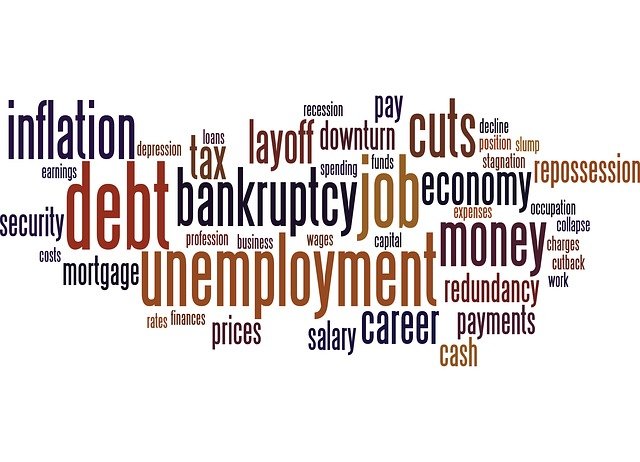One more home run by our friend Brandon Roark
 Even a society of billions consists invariably of the interactions between individuals, each of whom will only ever meet a few thousand of his fellows; will only ever work with a few hundred; will only ever provide for a few dozen; and will only ever really know himself. Society is an ecosystem of human interaction more complicated than any one of us could ever hope to imagine, let alone design.
Even a society of billions consists invariably of the interactions between individuals, each of whom will only ever meet a few thousand of his fellows; will only ever work with a few hundred; will only ever provide for a few dozen; and will only ever really know himself. Society is an ecosystem of human interaction more complicated than any one of us could ever hope to imagine, let alone design.
The sheer intricacy and unpredictability of the social ecosystem is why every historical attempt at reengineering it has ended in misery and chaos. Simply enough, the way to avoid failure is to make a good plan, to plan properly, knowledge is essential. A good surgeon should know first how a healthy body works before ever attempting to fix it. It goes without saying that so should any social engineer know the same of society; but how much of it can be known to a central administrator?
Society, from anyone’s perspective, is the product of countless many other people far away and even long ago acting. To complicate it even further, these actions were and are taken on valuations that exist only in the heads of the actors; immeasurable, unquantifiable, incomparable, subjective valuations. It would be dishonest for anyone to claim to know what would be best for society, especially when no one really knows what’s best for his own best friend.
Society’s would-be engineers might assume they “know” enough about how society works to say certain so-called market failures like income inequality and the business cycle are bad and must be surgically altered, so to speak. But how can they know those things are “bad”; and bad to whom? If they are so bad, where did they come from, why have they stuck around, and how do we know the alleged solutions presented will work without making things worse? We could lament deforestation in the Amazon, but would dumping a few tons of fertilizer into the basin really improve the situation?
Thankfully, we are wise enough to be intimidated by the complexity of such an ecosystem as the Amazon; though, sadly, human society is given less reverence. Plenty profess to know how to rework society, succumbing to what F. A. Hayek called a “fatal conceit”. One of my personal favorite examples is the Keynesian multiplier effect. It’s so important to the establishment’s current course of social destruction, it warms my heart to rip it to shreds. It starts with a seemingly pretty simple equation: multiplier = 1 / 1-mpc. The term “mpc” refers to marginal propensity to consume; a fraction between 0 and 1 representing the portion of income spent on consumption in a period of time.
Sure, marginal propensity to consume makes sense, but what about the rest of the equation? One minus “mpc” actually yields the marginal propensity to save. One over anything is the inverse, so the multiplier is actually the inverse of the marginal propensity to save over a period of time. The claim of course is that the multiplier represents the extra income generated by every unit of currency spent out of new income, like former savings or printed money.
What does it mean for the inverse of the marginal propensity to save to be the income multiplier? If that question makes your head hurt, don’t worry; that’s why “economics” is riddled with equations like this. If I chanced an interpretation of an equation suggesting that as people spend more of their would-be savings, resultant incomes grew asymptotically; I might say something like this:
Let’s say I spend $800 of my $1,000 per month income. According to the multiplier effect, I would have generated $4,000 of income to others presumably within the month of spending. Maybe what is meant by this is that the money I spent would – within the month – change hands to the tune of reallocating $4,000 worth of goods produced. Alright then; let’s say I spent $900. Suddenly, I’ve increased the sales of goods in my community by $10,000. If I spent all of it, I put an end to scarcity since 1/(1-1) = ∞.
Clearly, that’s not how reality works, let alone society. My consumption of a pop that might put a dollar in the pocket of five other people over the course of a month does not produce five more cans of pop, nor did it produce any of the other things that dollar used to purchase. In fact, the only result of my consumption of a can of pop is the net consumption of a can of pop. If I want to keep consuming, I’ll need to get that dollar back; to do that, I’ll have to produce something someone values more than a dollar.
The basic economic reality of the need to economize by consuming in line with production tends to be ignored, unfortunately; especially by those with lots of power. As it happens, growth in the highly politicized figure called “gross domestic product” (GDP) is great for political careers. Emboldened by the multiplier, excuses to inflate GDP can be used to justify immense government consumption, particularly when society can least afford it, like after a bust. They call this “counter-cyclical policy”.
GDP is defined as G + C + I + NE; the sum of government spending, consumer spending, investment, and net exports. Theoretically, this represents the total product of domestic producers as the total monetary income of domestic persons; which includes their tax bill, personal consumption, savings and investments. Net exports just adds to that income the price of goods sold to foreign consumers less the price of goods purchased in return.
It sounds superficially plausible as way of measuring the productivity of an economy, but GDP has some major epistemic problems. The first is in aggregating a society’s total product in terms of an amount of currency. The reason this is problematic is that prices as expressed in currency don’t provide a measure for value; prices can only provide a means for comparing relative valuations. Prices work great for comparing costs and revenues to determine whether a firm is making a profit or a loss, but they cannot be used to meaningfully quantify the product of an entire economy.
Take for example two identical island societies each using the same currency but never trading with each other. Let’s say they both have the same number of people and make the same number of beds, cars, chickens, homes, hospitals, shoes, et cetera in a given period of time. Now let’s say one has only half the quantity of currency than the other. Naturally, we can expect nominal prices and nominal wages to be higher in the one with more currency, but to express the same relative valuations of real goods as on the other island: for instance, an apple trades at 50% of a toothbrush whether their respective prices are $0.25 and $0.50 or $0.50 and $1.00.
The society with half the money in circulation is not half as productive as the other, obviously. This scenario demonstrates that it is indeed logically possible for one economy’s GDP to be half that of another and it mean absolutely nothing. A certain good or service of a certain quality at a certain time and in certain place or context earns a price from the willingness of consumers to trade money for it as opposed to spending it on something else. Money prices always reflect the value of alternatives – a comparison between specific, heterogeneous goods and services – not an absolute metric to be summed across an entire economy.
The second problem I want to address with GDP links us back up with the aforementioned multiplier effect. If the goal is to increase GDP, by definition and according to the multiplier effect, the government should spend any reserves it has; and compel present consumption and investment out of savings by dropping interest rates across the economy. As we know, this is done nowadays by a central bank creating new currency units to lend at low or no interest.
As explained above, causing money to change hands faster does not, in itself, produce more real goods and services. Real goods and services must be produced before they can be consumed, so there is definitely an issue of sustainability between the rate of consumption of real goods and the rate of production of real goods; this is a non-negotiable constraint of reality. Heretofore, the US central bank’s “stimulus” has been unfairly sustained by an enormous net importation of real goods from all over the truly productive, net-exporting world…in exchange for debt.
At any given time, in any given place, there will only ever be so much wood, steel, rice, useful land, tires, machines, computers, carpet, concrete, sneakers, cars, hoagies, cell phones and ink pens available for our use. We’ve clearly gotten much better at producing things, but by no stretch of the imagination does our apparent productivity warrant accelerating our consumption past any rate that could be sustained by our real capacity to produce, domestically and especially globally.
When so-called stimulus is injected into circulation, real resources are drawn away from uses directed by the choices of consumers (who, by the way, get their incomes not by magic multiplication but by actually doing useful work); and toward politically favored uses, even if under the best of intentions. Prices, of course, will tend to adjust for the widespread distortions this creates, insofar as buyers and sellers of real goods and services are allowed to change the ratios at which they trade.
The longer this goes on, the more capital is misallocated, the more risky new investments become, the larger the various speculative bubbles grow, the poorer productive industries become as they are forced through inflation to subsidize the politically favored, the scarcer goods become, the higher prices rise, and the more real wages fall. As they say, “the rich get richer and the poor get poorer”. This is why.
This “stimulus”, this mass consumption by the political caste and the true sickness of the western economic system, is the result of social engineering on bad science, whether politicians are confused themselves or are (more likely) exploiting the ignorance of their constituents. What we should be doing, shockingly enough, is exactly what the market price system would be directing us to do without central planners screwing with society’s nervous system: restricting consumption to sustainable levels so we can begin to restore and reprioritize the uses of capital. That is the only way economies actually grow. Anything else is a politically useful economic fairytale.

After receiving a mechanical engineering degree, Brandon pursued graduate studies in engineering management – an MBA for engineers. There, he took a lively interest in contract ethics and business economics, devoting precious time to independent study. This led him to the Mises University conference at the Ludwig von Mises Institute, where he studied Austrian economics with esteemed scholars in a variety of disciplines. Since, he has been dabbling in engineering work, developing assisted living centers with his father, and writing on philosophy, ethics, and economics.
Also on our website: https://emancipatedhuman.com/dismal-science-enemies/